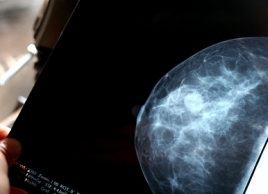4 things you should know about DCIS and screening mammograms
Understanding DCIS and screening mammograms could save your life

Source: Best Health Magazine, Spring 2008
1. Understand the difference between a “diagnostic” mammogram and a “screening” mammogram.
The former is given whenever a women has symptoms in her breast, such as a lump, a nipple discharge, skin texture changes, pain, swelling or other unusual developments. They are essential to find out the cause of breast symptoms. A screening mammogram is given to healthy women with no symptoms of breast cancer in the hope it may find cancerous changes too small to feel. In women aged 50 to 69 years, it has been shown to prolong one life for every 2,000 women screened, or about 500 women a year in Canada.
2. Understand that screening mammograms do not prevent cancer.
Rather, they may find it earlier in the hope that earlier treatment will save lives. In some cases, however, the earlier treatment may not have been needed because the localised cancer may not grow into invasive cancer.
3. The denser breasts of premenopausal women make mammography less sensitive.
This is one reason Canada and European countries do not invite women under age 50 to attend screening mammography programs (in the U.S., the National Cancer Institute recommends it for women 40+). Screening mammography has not been found to save lives in pre-menopausal women.
4. If you are a healthy woman over the age of 50 and considering getting screening mammography, educate yourself about the risks and benefits of being diagnosed with DCIS.
If you decide not to have a mammogram and later in your life an invasive lump or other symptoms are found, will you be able to live with your decision? If you decide to have a screening mammogram and DCIS is found, talk to your doctor about your options.
Found this article informative? Subscribe to our magazine today and receive more Best Health exclusives delivered to your door!




